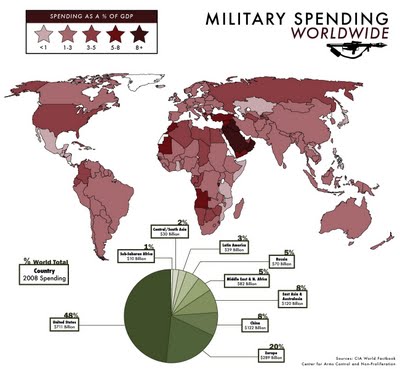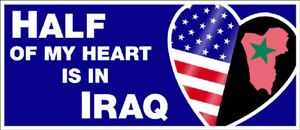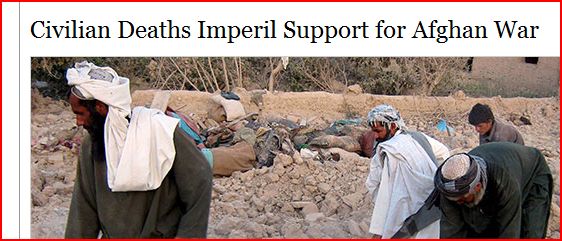Jessica H.S. sent in a link to this map showing global military spending as a % of GDP as as a % of total world military spending (much larger version available here):

I knew the U.S. spent a ginormous total amount on the military, but I didn’t know we account for right at half of all military spending. And I would have thought China would have more than 8%.
Commenter George has a good point that I really should have thought of:
Saying we account for half of all military spending is misleading. It costs a great deal more to construct military equipment in the U.S. so, of course we spend a larger number of dollars than China would. In China a submarine costs many fewer dollars to build. Of these illustrations the percent of GDP is by far the most informative.
Thanks for pointing that out!





























